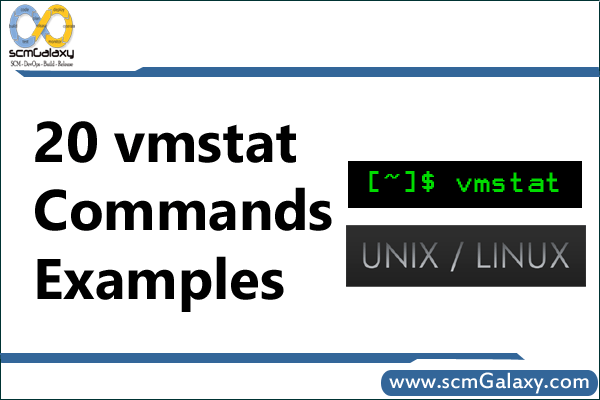Tag: Linux
How to Set or Configure Proxy in Linux and Windows System? – scmGalaxy

Java Installation Process in Linux – Complete guide
Download, Install and Configure JDK 8 & JRE 8
Platfrom – Debian & Ubuntu
#JRE8 - Package contains just the Java Runtime Environment 8 $ sudo apt-get install openjdk-8-jre #JKD8 - Package contains just the Java Developement Environment 8 $ sudo apt-get install openjdk-8-jdk
Platfrom – Fedora, Oracle Linux, Red Hat Enterprise Linux, etc
#JRE8 - Package contains just the Java Runtime Environment 8 $ su -c “yum install java-1.8.0-openjdk” #JKD8 - Package contains just the Java Developement Environment 8 $ su -c "yum install java-1.8.0-openjdk-devel" $ wget --no-cookies --no-check-certificate --header "Cookie: gpw_e24=http%3A%2F%2Fwww.oracle.com%2F; oraclelicense=accept-securebackup-cookie" "http://download.oracle.com/otn-pub/java/jdk/8u151-b12/e758a0de34e24606bca991d704f6dcbf/jdk-8u151-linux-x64.rpm" $ wget -c --header "Cookie: oraclelicense=accept-securebackup-cookie" http://download.oracle.com/otn-pub/java/jdk/8u131-b11/d54c1d3a095b4ff2b6607d096fa80163/jdk-8u131-linux-x64.rpm curl -v -j -k -L -H "Cookie: oraclelicense=accept-securebackup-cookie" http://download.oracle.com/otn-pub/java/jdk/8u131-b11/d54c1d3a095b4ff2b6607d096fa80163/jdk-8u131-linux-x64.rpm > jdk-8u112-linux-x64.rpm
Platfrom – All platforms of Linux, Windows and Mac in Tar ball format
$ wget --no-check-certificate -c --header "Cookie: oraclelicense=accept-securebackup-cookie" http://download.oracle.com/otn-pub/java/jdk/8u151-b12/e758a0de34e24606bca991d704f6dcbf/jdk-8u151-linux-x64.tar.gz $ wget --no-cookies --no-check-certificate --header "Cookie: gpw_e24=http%3A%2F%2Fwww.oracle.com%2F; oraclelicense=accept-securebackup-cookie" "http://download.oracle.com/otn-pub/java/jdk/8u151-b12/e758a0de34e24606bca991d704f6dcbf/jdk-8u151-linux-x64.tar.gz" $ wget -c --header "Cookie: oraclelicense=accept-securebackup-cookie" http://download.oracle.com/otn-pub/java/jdk/8u131-b11/d54c1d3a095b4ff2b6607d096fa80163/jdk-8u131-linux-x64.tar.gz
How to set JAVA in Linux System?
$ export JAVA_HOME=/opt/jdk1.8.0_144/ $ export PATH=/opt/jdk1.8.0_144/bin:$PATH;
Download, Install and Configure JDK 7 & JRE 7
Platfrom – Debian & Ubuntu
#JRE7 - Package contains just the Java Runtime Environment 7 $ sudo apt-get install openjdk-7-jre #JKD7 - Package contains just the Java Developement Environment 7 $ sudo apt-get install openjdk-7-jdk
Platfrom – Fedora, Oracle Linux, Red Hat Enterprise Linux, etc
$ su -c “yum install java-1.7.0-openjdk” $ su -c “yum install java-1.7.0-openjdk-devel”
Platfrom – All platforms of Linux, Windows and Mac in Tar ball format
wget –no-cookies –header “Cookie: gpw_e24=http%3A%2F%2Fwww.oracle.com” “http://download.oracle.com/otn-pub/java/jdk/7/jdk-7-linux-x64.tar.gz” wget –no-check-certificate –no-cookies –header “Cookie: oraclelicense=accept-securebackup-cookie” http://download.oracle.com/otn-pub/java/jdk/7u79-b15/jdk-7u79-linux-x64.tar.gz curl -v -j -k -L -H “Cookie: oraclelicense=accept-securebackup-cookie” http://download.oracle.com/otn-pub/java/jdk/7u79-b15/jdk-7u79-linux-x64.rpm > jdk-7u79-linux-x64.rpm
JDK 6
Debian, Ubuntu, etc.
On the command line, type:
$ sudo apt-get install openjdk-6-jre
The openjdk-6-jre package contains just the Java Runtime Environment.
$ sudo apt-get install openjdk-6-jdk
If you want to develop Java programs then install the openjdk-6-jdk package.
Fedora, Oracle Linux, Red Hat Enterprise Linux, etc.
On the command line, type:
$ su -c “yum install java-1.6.0-openjdk”
The java-1.6.0-openjdk package contains just the Java Runtime Environment.
$ su -c “yum install java-1.6.0-openjdk-devel”
If you want to develop Java programs then install the java-1.6.0-openjdk-devel package.
Complete Linux & Shell Scripting Guide and Tutorial for Linux Admin and DevOps Engineer

Linux User Commands
Linux Admin Commands
- Linux Commands for Administrator
- Main Responsibilities of the Linux System Administrator
- 20 pmap Commands Examples in Linux / UNIX
- 20 mpstat Commands Examples in Linux / UNIX
- 20 iostat Commands Examples in Linux / UNIX
- 20 vmstat Commands Examples in Linux / UNIX
- 20 Xargs Commands Examples in Linux / UNIX
- 20 Mount and Unmount Filesystem / Partition commands in Linux / UNIX
- Steps to Perform SSH Login Without Password Using ssh-keygen and ssh-copy-id
- Linux Performance Monitoring using iostat, mpstat and vmstat
- Understanding Epoch & Unix Timestamp
- Common unix commands and utilities
- Shell Script Parameters
- Unix Sed Quick Reference
- Reading XML file using shell script
- Unix Command: Grep
- VI/VIM editor Commands
- Basic of Unix Presentation
Useful Tools in Linux
Linux Shell Scripting Collection and Interview Guide
- Interview Questions Sets : Shell Script Descriptive
- Interview Questions & Answer Sets : Shell Programming
- Must have collection of shell script for any SCM admin
- Frequently Used Shell Script
- Shell Script collection in scmGalaxy Forum
- Automate mandatory user-parameter in Shell Script using expect
- Various Commands to send an email in Linux
- df advance command usage
- FTP commands for Linux / Unix
- ShellScript to monitor available disk space on AIX
- Find Linux Command Collection
- Disable IPv6 and Enable IPv4 in Red Hat Linux
- Configuring NFS to access the files from remote Linux machine as a mount point
- Linux Shell Scripting Units and Exercise Unit – 1
- Linux Shell Scripting Units and Exercise Unit – 2
- Linux Shell Scripting Units and Exercise Unit – 3
- Linux Shell Scripting Units and Exercise Unit – 4
- Linux Shell Scripting Units and Exercise Unit – 5
Linux Troubleshooting Guide
Linux Quiz
Linux Exercise
Linux Bash Scripting Video Tutorial and CBT
How to Install Docker in Linux?

Location of Docker images in all Operating Systems (Linux, Windows, Redhat, Mac OS X)

20 pmap Commands Examples in Linux / UNIX | pmap Commands Tutorial

You can find the memory used by a program (process) by looking into /proc directory or using standard command such as ps or top.
The -x option can be used to provide information about the memory allocation and mapping types per mapping. The amount of resident, non-shared anonymous, and locked memory is shown for each mapping:
20 mpstat Commands Examples in Linux / UNIX | mpstat Commands Tutorial

Usage:
20 iostat Commands Examples in Linux / UNIX | iostat Commands Tutorial

$ iostat -m
20 vmstat Commands Examples in Linux / UNIX | vmstat Commands Tutorials


